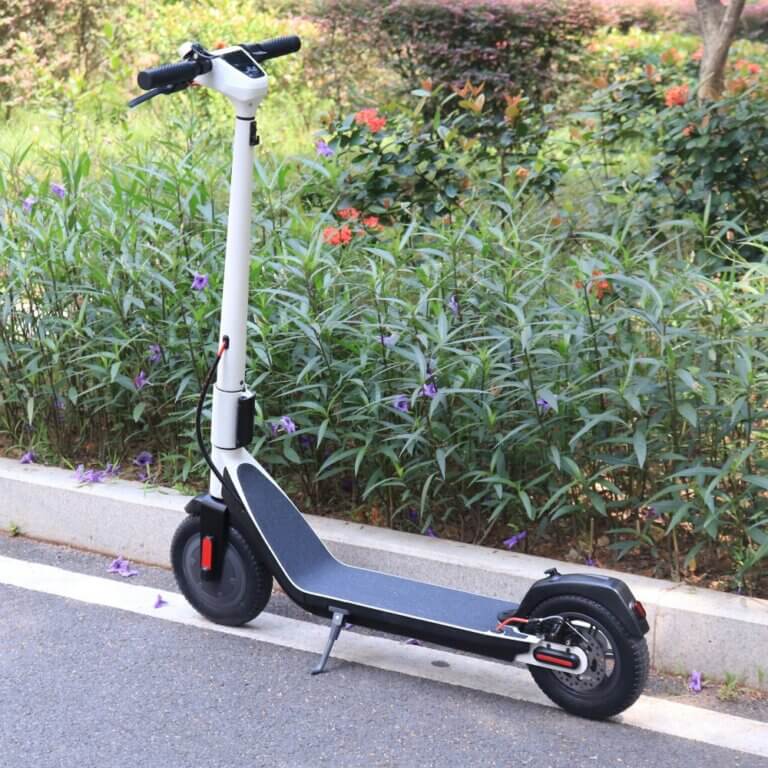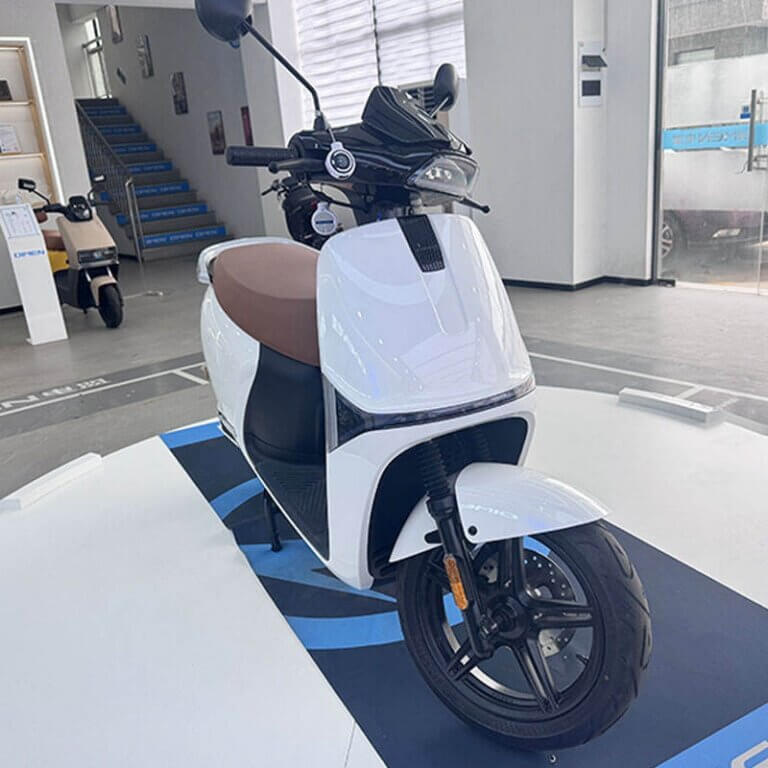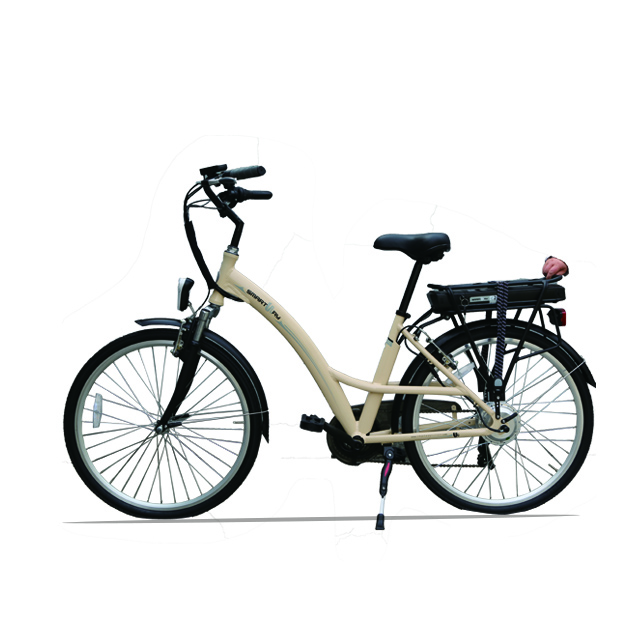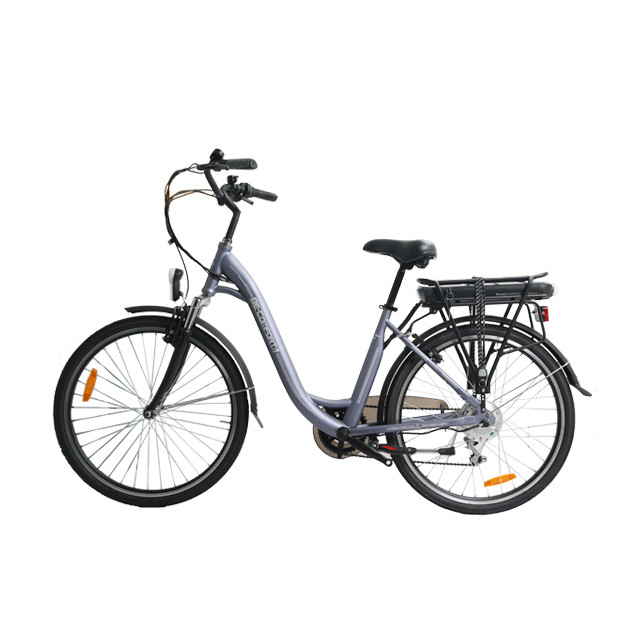-
414 Block B, ZT Times Plaza, Wuhan, Hubei, China
Blog
Oem Vs Odm Manufacturing For e-Mobility Brands Clarifies Differences
Summary
The landscape of manufacturing in the e-mobility sector is fundamentally shaped by two distinct models: Original Equipment Manufacturer (OEM) and Original Design Manufacturer (ODM). OEMs focus primarily on producing products based on specific designs and specifications provided by clients, allowing for a high level of customization and control over intellectual property. In contrast, ODMs take on both design and production responsibilities, providing ready-made solutions that facilitate faster market entry but often limit customization options and control over the product’s unique attributes. Understanding the differences between these two manufacturing approaches is critical for e-mobility brands aiming to navigate the complexities of product development, supply chain management, and competitive positioning.
Notably, OEM and ODM manufacturing models come with their respective advantages and challenges, particularly in the context of cost implications, time to market, and the level of design input required. OEMs generally incur higher upfront costs due to extensive research and development (R&D) needs, but they offer brands the opportunity to create unique products that can differentiate them in the marketplace. On the other hand, ODMs present a cost-effective and time-efficient route by utilizing pre-existing designs, yet this often results in limitations regarding customization and the potential risk of market saturation. These dynamics highlight the importance of strategic decision-making for brands seeking to leverage either model effectively.
Prominent controversies surrounding OEM and ODM relationships primarily focus on intellectual property concerns and quality assurance challenges. OEM clients maintain ownership of their designs and related intellectual property, providing flexibility in switching manufacturers if necessary; however, this can lead to heightened supplier dependency and risks related to quality control. Conversely, ODMs, while alleviating the operational burden for brands, often retain ownership of the designs, which can lead to potential legal complications and limitations on product modifications. As the e-mobility market continues to expand, understanding these nuances will be essential for brands to innovate, remain competitive, and mitigate risks associated with manufacturing partnerships.
Differences Between OEM and ODM
The distinctions between Original Equipment Manufacturer (OEM) and Original Design Manufacturer (ODM) are critical for businesses navigating the manufacturing landscape. The key differences primarily revolve around design input, intellectual property ownership, customization, and overall manufacturing responsibilities.
Design and Development Responsibilities
The primary difference between OEM and ODM lies in the extent of design responsibility. An OEM focuses on manufacturing products based on detailed specifications provided by the client, often including extensive engineering drawings and instructions. They act as an extension of the client’s design team, emphasizing manufacturing execution and quality assurance. In contrast, ODMs are responsible for both the design and production of products, often utilizing their own research and development (R&D) to create items that can be customized for branding purposes.
Intellectual Property Ownership
Intellectual property (IP) rights also vary significantly between the two models. In OEM arrangements, the client retains full ownership of the design and related IP, allowing for greater flexibility in switching manufacturers if needed. Conversely, ODMs often maintain ownership of the designs they create, which may limit the client’s control over their product’s unique characteristics and branding.
Customization and Flexibility
Customization is another area where OEM and ODM diverge. OEMs offer a high degree of customization, enabling clients to specify every aspect of the product, from components to materials, to achieve unique performance characteristics. This level of customization, however, comes with higher upfront costs and longer development timelines. On the other hand, ODMs provide a more streamlined and faster approach, leveraging existing designs to facilitate quicker time-to-market, but customization options are typically limited to aesthetic adjustments.
Cost Implications and Time to Market
The financial implications of choosing between OEM and ODM also differ. OEM arrangements usually require significant investment in R&D and custom tooling, which can lead to higher unit costs, particularly for unique products. In contrast, ODMs lower the barrier to entry by utilizing pre-existing designs, resulting in reduced development costs but potentially less optimized unit prices compared to OEM products.

Advantages of OEM Manufacturing
OEM (Original Equipment Manufacturer) manufacturing offers several distinct advantages for businesses, particularly in the context of the e-mobility industry. These benefits can significantly impact a brand’s operational efficiency, market positioning, and overall success.
Cost Efficiency
One of the primary advantages of OEM manufacturing is the potential for lower per-unit production costs. OEMs often deal in higher volumes, which enables them to offer more competitive pricing compared to ODMs (Original Design Manufacturers). By leveraging economies of scale, OEMs can reduce material costs and streamline production processes, ultimately passing these savings on to the brand owner.
Technological Expertise
OEMs possess substantial technical know-how, gained from years of experience in designing and producing products according to specific client specifications. This expertise leads to a more efficient production process and often results in higher-quality end products. Brands can benefit from this knowledge, ensuring that their products meet or exceed industry standards.
Strong Supply Chain Management
With decades of experience in manufacturing, OEMs typically have established relationships with reliable suppliers. They are adept at managing complex supply chains, which contributes to better pricing, quality, and delivery times. The infrastructure built by OEMs allows for effective sourcing of materials, ensuring timely delivery of finished products to the client. This robust supply chain management is particularly advantageous for e-mobility brands looking to scale operations.
Control Over Design and Brand Identity
Working with an OEM allows companies to maintain full control over product design and specifications, ensuring that the final product aligns closely with their brand identity. This control fosters a unique market presence and enhances brand recognition. By offering products that embody their vision and quality standards, brands can cultivate greater customer loyalty and a stronger market position.
Flexibility and Scalability
The OEM model provides brands with the flexibility to adapt product features based on customer feedback and emerging market trends. As needs evolve, OEM partners can easily modify designs or implement new features, thereby responding quickly to changes in consumer demand. Additionally, once the design is established, scaling production becomes much simpler, facilitating growth and expansion in the competitive e-mobility landscape.
Risk Mitigation
While there are risks associated with product development, the OEM model allows brands to minimize some of these risks. By relying on the manufacturing expertise of the OEM, companies can shift focus from production complexities to strategic initiatives such as innovation, branding, and customer engagement. This partnership can alleviate some of the burdens associated with product liability and compliance issues, as the OEM handles manufacturing processes.

Advantages of ODM Manufacturing
Original Design Manufacturing (ODM) provides several key advantages for businesses, particularly in the fast-paced world of e-mobility. Companies often choose ODM to streamline their production processes and gain a competitive edge in the market.
Cost-Effectiveness
One of the primary benefits of utilizing an ODM model is the significantly lower product development costs. ODMs handle both design and manufacturing, allowing businesses to bypass the expensive research and development phase associated with creating unique products from scratch. This model reduces the need for upfront capital investment, making it an attractive option for companies looking to enter the market with minimal financial risk.
Faster Time to Market
ODMs enable quicker product launches compared to traditional manufacturing models. The integrated design and manufacturing processes reduce the time required for product development, allowing businesses to bring products to market rapidly. In the e-mobility sector, where timing can be critical, missing a launch window can lead to lost market share to more agile competitors. By relying on an ODM, companies can focus on branding and marketing while leaving the technical elements of production to the manufacturer.
Scalability and Flexibility
ODMs are typically more adept at scaling their manufacturing processes. Because they produce large volumes of specific products, they can achieve economies of scale, resulting in lower per-unit costs. This flexibility allows businesses to adapt to changing market demands without the operational strain that often accompanies custom manufacturing setups. Additionally, maintaining a dynamic relationship with an ODM can foster continuous improvement and innovation, helping businesses remain competitive in evolving markets.
Reduced Operational Burden
By outsourcing design and manufacturing to an ODM, companies can alleviate much of the operational tension associated with production logistics. ODMs take on the responsibility for manufacturing processes, allowing businesses to concentrate on their core competencies, such as branding, marketing, and consumer engagement. This shift in focus can lead to more effective resource allocation and improved overall business performance.
Access to Established Expertise
Partnering with an ODM provides businesses access to established design and manufacturing expertise. This can be particularly beneficial for companies that may lack in-house capabilities for product design or engineering. By leveraging the ODM’s experience and resources, businesses can enhance product quality and reduce the risk of errors during the development phase.

Challenges in OEM Manufacturing
OEM (Original Equipment Manufacturer) manufacturing presents various challenges that can impact the production process and overall business strategy for companies that engage in this model.
Longer Development Cycles
One of the primary challenges associated with OEM manufacturing is the inherently longer gestation period due to the comprehensive development cycle required before manufacturing can commence. This extended timeline can result in delays in bringing products to market, which may hinder a company’s competitive edge in fast-paced industries.
Supplier Dependency
Engaging an OEM often leads to significant supplier dependency, meaning that clients rely heavily on the chosen OEM for production. Any issues at the OEM’s facility-such as production delays or quality lapses—can directly affect the client’s business operations and reputation. Moreover, switching suppliers can be both difficult and costly, particularly if the product design is reliant on the OEM’s proprietary technology or specialized tooling.
Investment and Risk
OEMs require substantial upfront capital investments for research and development (R&D), prototyping, and custom tooling, leading to financial risks associated with developing new products. Although the potential for optimized per-unit costs exists when producing a unique product at scale, the initial outlay may deter some businesses from pursuing the OEM route.
Quality Assurance
While OEMs implement in-line quality control and end-of-line testing procedures to meet or exceed the client’s quality benchmarks, the responsibility of maintaining consistent quality can still pose challenges. Inadequate quality assurance can lead to increased returns, warranty claims, and damage to the brand’s reputation.
Supply Chain Disruptions
Both OEMs and ODMs (Original Design Manufacturers) face the risk of supply chain disruptions, which can arise from material shortages, supplier issues, or unforeseen external events. Such disruptions can significantly impact the availability of components and result in production delays, further complicating the manufacturing process.
Intellectual Property Concerns
Collaborating with OEMs can also lead to concerns regarding intellectual property (IP) leakage. If the OEM works with competitors or utilizes insights gained from a client’s project in their developments, it can jeopardize the client’s competitive advantage. Mixed IP ownership may also arise when standard parts or technologies from the OEM are integrated into the final product, complicating potential future transitions and ownership claims.
Cost Pressures
The pressure to reduce costs while maintaining quality can lead to strategic challenges within OEM manufacturing. Companies may feel compelled to redesign their networks and logistics to enhance capacity optimization and efficiency, which can be resource-intensive and time-consuming.
Challenges in ODM Manufacturing
While the Original Design Manufacturer (ODM) model offers various advantages, such as cost efficiency and speed to market, it also presents a unique set of challenges for businesses that opt to utilize this manufacturing approach.
Intellectual Property Concerns
One of the primary challenges associated with ODM manufacturing is related to intellectual property (IP) rights. Since the ODM retains ownership of the design, clients face limitations on their ability to modify or customize products, which can hinder innovation and differentiation in the market. Furthermore, this arrangement can lead to potential legal complications, including patent infringement issues, particularly if the ODM’s design inadvertently overlaps with existing patents. Companies must carefully negotiate contracts to protect their interests and avoid conflicts regarding IP ownership.
Limited Customization and Control
Clients often experience limited customization options when working with ODMs. While some minor alterations may be permissible, such as color changes or logo additions, the scope for significant modifications is generally restricted. This lack of control over the manufacturing process means that clients have little visibility into quality control procedures and component sourcing, which introduces risks related to quality consistency and supply chain stability. As a result, businesses may find it challenging to ensure that the final product meets their quality standards and customer expectations.
Market Saturation and Product Differentiation
Another significant challenge is the potential for market saturation due to the non-exclusive nature of ODM designs. Since ODMs often produce the same products for multiple clients, it becomes increasingly difficult for companies to achieve a unique position in the marketplace. This situation can lead to heightened competition based on price rather than innovation, diminishing brand identity and reducing profit margins for businesses striving to stand out.
Development and Flexibility Limitations
Choosing an ODM model can also impact a company’s long-term business flexibility. The reliance on a manufacturer for design and production can restrict a client’s ability to pivot quickly in response to changing market trends or customer demands. Additionally, the need for high minimum order quantities can complicate product introductions and make it challenging for smaller companies or startups to compete effectively.
Case Studies
Successful OEM Partnerships
The landscape of Original Equipment Manufacturer (OEM) and Original Design Manufacturer (ODM) partnerships is filled with notable examples that illustrate the benefits and challenges inherent in these collaborations. One prominent case study is the partnership between Apple and Foxconn, where Apple leverages Foxconn’s extensive manufacturing capabilities to produce its iPhones and other consumer electronics. This relationship serves as a model of scale and innovation, showcasing how a well-structured OEM partnership can drive significant market success and product innovation.
Key Success Factors
The success of OEM partnerships, such as the one between Apple and Foxconn, can often be attributed to several critical factors. These include effective collaboration, adaptability to changing market demands, and a commitment to sustainability. By fostering strong relationships and maintaining open lines of communication, both parties can navigate challenges and optimize the manufacturing process to deliver high-quality products.
The ODM Model in Practice
In contrast to traditional OEM partnerships, the ODM model provides a different approach, enabling companies to quickly enter the market with ready-made solutions. ODMs like Quanta Computer and Pegatron, which have evolved to serve the automotive electronics sector, exemplify this model. They design and manufacture products that companies can rebrand with minimal customization. This allows businesses lacking in-house design capabilities to capitalize on pre-designed offerings, thereby significantly reducing time-to-market and development costs.
Case Study: ODM Utilization in Consumer Electronics
An example within the consumer electronics industry highlights how a company may partner with an ODM to create a line of kitchen appliances. By utilizing an ODM’s pre-designed microwaves or blenders, the company can focus on branding and marketing, leaving the intricate details of design and manufacturing to the ODM. This arrangement not only expedites product launches but also mitigates the risk of significant upfront investments in design resources.
Lessons Learned
From these case studies, it is clear that both OEM and ODM partnerships come with their own sets of advantages and challenges. Successful partnerships often hinge on establishing robust communication channels, understanding the intricacies of intellectual property protection, and evaluating the reliability and previous performance of partners. Companies looking to engage in such collaborations should carefully analyze potential partners’ past projects and customer feedback to ensure a fruitful partnership that aligns with their business objectives.
Future Trends
The landscape of OEM (Original Equipment Manufacturer) and ODM (Original Design Manufacturer) manufacturing is rapidly evolving, particularly in the context of e-mobility. As the industry shifts towards electrification and artificial intelligence, strategic collaboration between OEMs, Tier 1 suppliers, and technology firms is becoming increasingly vital. This collaboration emphasizes joint development, data sharing, and co-investment to remain competitive in a fast-moving market.
Advancements in Technology
The adoption of advanced technologies such as Industry 4.0, IoT, Al, and Big Data is transforming manufacturing processes and supply chain management. These innovations enable process optimization, real-time tracking, and enhanced production flexibility, which are critical as manufacturers respond to rising consumer demand for customization and sustainability. Moreover, the integration of automation and robotics is enhancing efficiency, although the incorporation of new technologies may initially complicate production timelines.
Focus on Sustainability
Sustainability is another key trend shaping the future of manufacturing in the e-mobility sector. As electric vehicles (EVs) become more mainstream, manufacturers are increasingly adopting eco-friendly materials and energy-efficient practices. This includes the development of EV charging stations powered by renewable energy sources, which supports broader sustainability goals and reduces greenhouse gas emissions. Additionally, regulatory bodies are working on standards for battery recycling and disposal, further emphasizing the importance of sustainable practices in the industry.
Market Dynamics
The electric vehicle market is poised for significant growth, with sales projected to increase substantially in the coming years. The shift towards EVs is being driven by ambitious policy programs and a growing consumer preference for environmentally friendly transportation options. Notably, China continues to dominate global electric car sales, but markets in Europe and the United States are also expanding rapidly. As traditional automakers and new entrants compete for market share, OEMs must focus on delivering affordable, mass-market EVs with reliable charging solutions.
Collaboration and Innovation
The future of ODM and OEM manufacturing in the e-mobility sector relies heavily on collaboration. Partnerships between OEMs and ODMs enable the pooling of resources, knowledge, and capabilities, fostering innovation and accelerating time-to-market for new products. This collaboration is crucial for navigating the complexities of the evolving e-mobility landscape, as manufacturers strive to meet consumer demands while maintaining cost efficiency and quality standards.
Historical Context
The evolution of manufacturing models, particularly Original Equipment Manufacturer (OEM) and Original Design Manufacturer (ODM), has played a pivotal role in the development of the e-mobility sector. Historically, the manufacturing landscape has shifted in response to technological advancements, market demands, and economic pressures, significantly influencing how companies approach product development and production in the electric vehicle (EV) market.
The Rise of OEM and ODM Models
The OEM model, which emphasizes outsourcing production while retaining control over design and specifications, became prevalent during the industrialization of the automotive industry. This allowed brands to focus on innovation and branding while leveraging the manufacturing capabilities of specialized companies. Conversely, the ODM model emerged as manufacturers began offering comprehensive services that encompassed both design and production. This approach appealed to businesses seeking to reduce costs and accelerate time-to-market, especially those lacking in-house design capabilities or resources.
E-Mobility’s Impact on Manufacturing Strategies
As the global e-mobility market has expanded-valued at USD 289 billion in 2022 and projected to grow at a CAGR of 27.2%—the distinctions between OEM and ODM have become more pronounced. The push for electric vehicles and the rise of sustainable transportation solutions have necessitated a reevaluation of manufacturing strategies. Companies are increasingly required to adapt to the rapid technological advancements in battery technology and charging infrastructure, driving the demand for efficient production models that can respond to evolving market dynamics.
Challenges and Opportunities
Despite the growth, significant challenges persist within the e-mobility sector, including high initial costs and the need for robust charging infrastructure. These factors have prompted many companies to consider ODM relationships, allowing them to benefit from established design expertise and production efficiencies. The historical context of OEM and ODM highlights the necessity of clear communication and collaboration among stakeholders, which can significantly impact project timelines and overall success in the e-mobility market. As such, the understanding of these manufacturing approaches continues to evolve, shaped by the demands of a rapidly changing industry.










